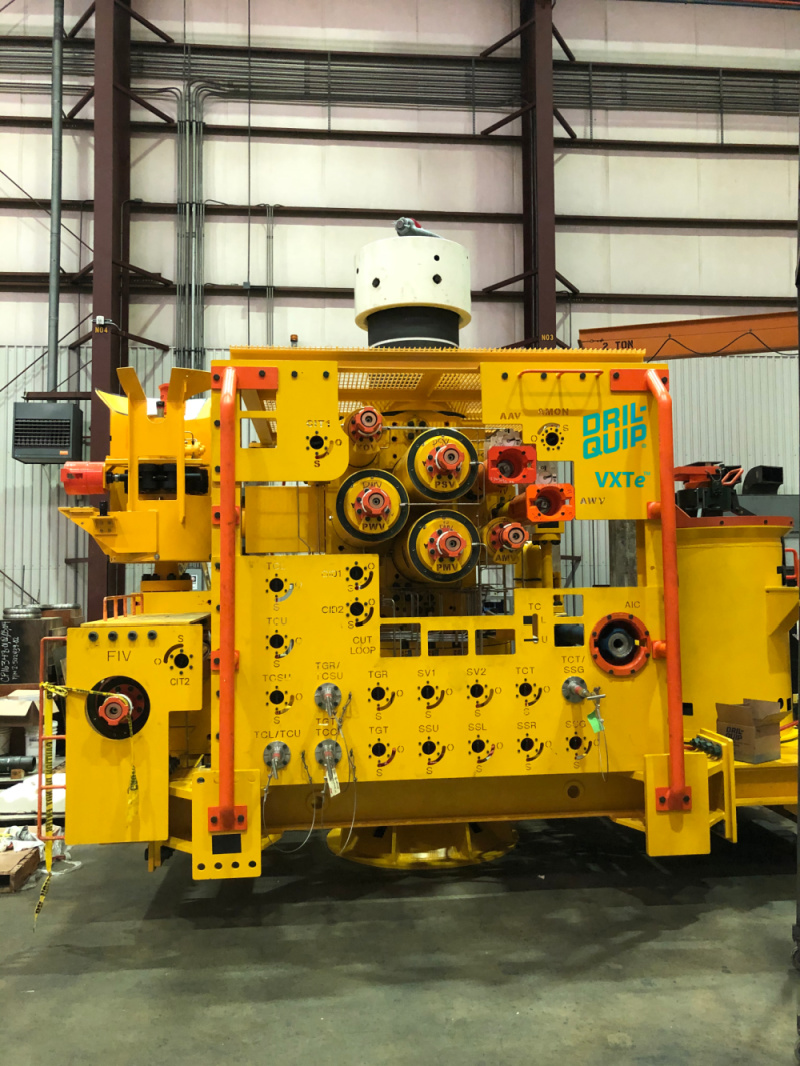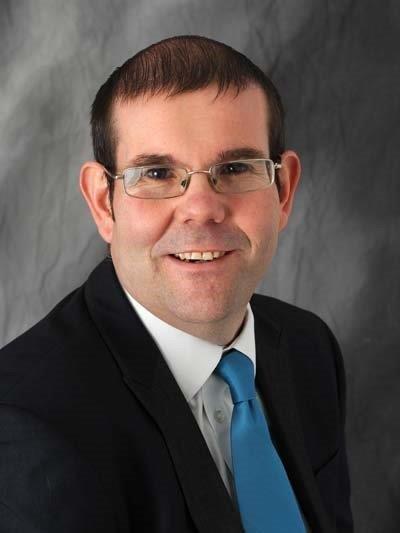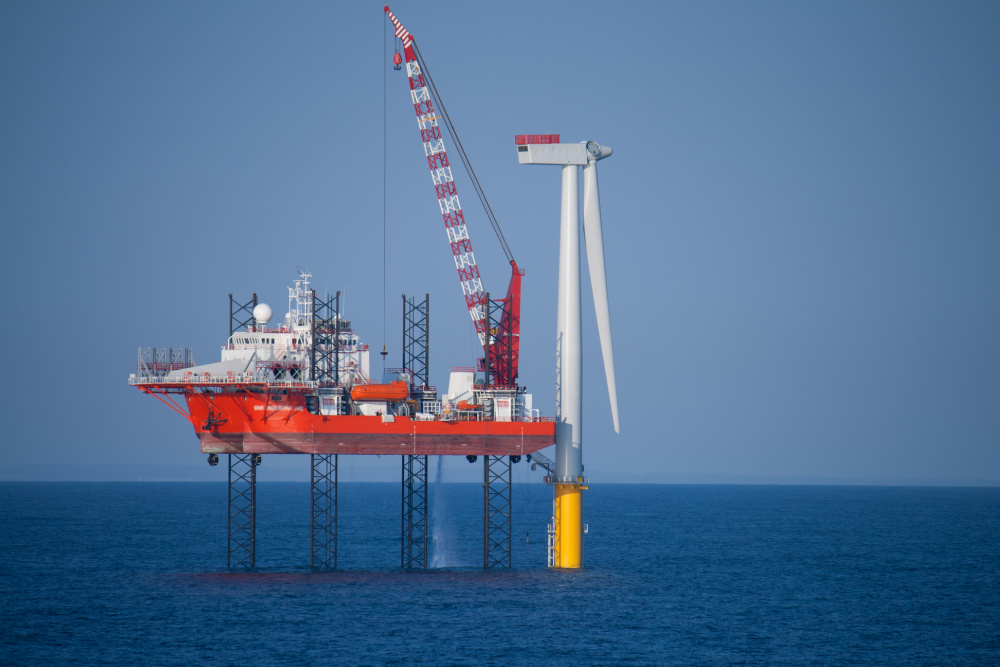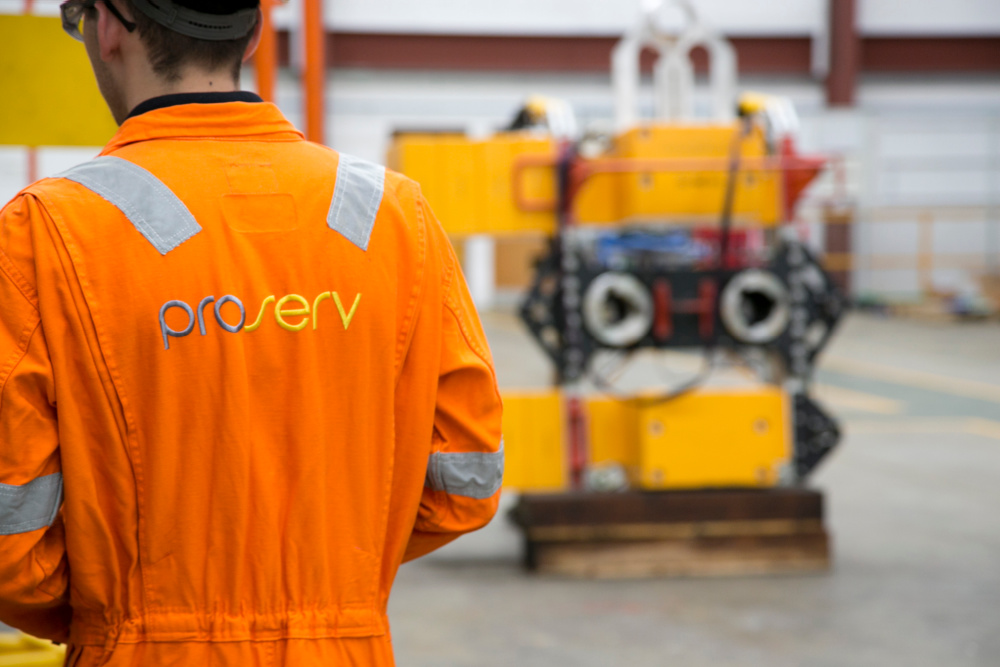Presented by:

Editor's note: This article appears in the E&P newsletter. Subscribe here.
As momentum picks up toward a lower-carbon world, subsea technology providers are seizing opportunities in new spaces such as offshore renewables, while fostering continued improvement in the oil and gas space.
Some oilfield service companies are already crossing over—if they haven’t already—applicable subsea technologies and skillsets typically used during oil and gas production to offshore wind, carbon capture and storage, and geothermal energy. Although the oil and gas sectors still represent for the largest market for subsea players, offshore renewables are gaining attention. Business strategies are being reshaped, and R&D efforts are underway.
The pickup comes as some of the industry’s largest traditional oil and gas companies ratchet up investments in wind, solar, geothermal, carbon capture, utilization and storage (CCUS), and other green technologies. It also comes amid pressure from investors, governments and others concerned about climate change calling for sustainable energy production and smaller carbon footprints.
There has been an increasing focus on technology to make goals of reaching net-zero a reality.
“We really do have an opportunity to make a difference. I’m excited to be in the middle of it. I think the industry’s dying to embrace it,” John Mossop, business development manager for Dril-Quip Inc., told Hart Energy's E&P. “The oil and gas industry isn’t going away, but I think there’s a lot of expertise, a ton of talent and a ton of design-thinking that we can apply and solve problems that’s going to make us all better off in the long term.”
Shrinking carbon footprints
Known for its onshore and offshore drilling and production equipment, Dril-Quip is already an active player in the energy evolution. The company has focused its R&D efforts on developing products that change the way wells are drilled and completed to provide permanent cost savings by eliminating hardware and operational steps and reducing risk.
By reducing installation time and removing equipment, Dril-Quip said its products also lower carbon footprint for the company’s customers. Early stage 1 and 2 calculations based on industry, academia and customer data show that Dril-Quip’s e-Series products reduce CO2 emissions by more than 1,500 metric tons.

Reductions are most visible from its VXTe system, a 2020 recipient of the Offshore Technology Conference’s Spotlight on New Technology Award. It’s part of Dril-Quip’s Green By Design initiative. By eliminating needs for a tubing head spool and orientating the tubing hanger, the VXTe reduces installation time by four to five days and equipment costs by $3 million to $4 million per well and it lowers carbon footprint more than 1,080 metric tons.
“Because the VXTe technology eliminates 40 tons of hardware, we eliminate the need to mine the ore—it is no longer necessary to make the forgings, and there’s no need to manufacture the equipment,” Mossop explained. “And all of our e-Series products are doing that. We’re helping our customers be more environmentally responsible by taking that out of the equation.
“Oil and gas is not going away any time soon. Our ultimate goal is to improve people’s standard of living, but to do it in a cleaner way by lowering our customers’ carbon footprints,” he continued, “and that’s what we’re doing with our technologies.”
A natural evolution
In addition to making carbon reduction a focus, Dril-Quip has been leveraging its capabilities, particularly its subsea trees, for use in CCUS. Dril-Quip said its products are well-suited for injecting captured CO2 into reservoirs for permanent storage.
The Houston-based oilfield manufacturer has begun providing products to the carbon capture market and anticipates future growth there and in the geothermal energy market, an area in which the company has been involved for more than 25 years.
The International Energy Agency (IEA) has identified CCUS as being among the crucial technologies needed to reach net-zero emission goals that government and companies have set. It contributes to not only directly reducing emissions in key sectors, the IEA said, but also removing CO2 from the atmosphere. It can be stored in offshore geologic formations, including in abandoned oil and gas fields where conditions are suitable. Dril-Quip is modifying its tree technologies for CCUS applications.
“CO2 storage is a business and a sector that’s ready to blossom,” Mossop said. “We see it as a natural evolution for Dril-Quip. Our VXTe vertical subsea tree system is ideal for offshore CCUS projects.

“Dril-Quip has a history of finding solutions to some of the industry’s most complex challenges,” he continued, “including products for high-pressure, high-temperature, and high-fatigue conditions. By listening carefully to our customers’ needs and requirements, we can readily tailor solutions ideal for CO2 applications and be successful in that market.”
During the latest quarterly analyst fireside chat, Dril-Quip CEO Blake DeBerry said the company is spending R&D money on fine-tuning its tree systems to meet carbon capture requirements.
CCS involves putting carbon into a slurry and injecting it into an existing reservoir.
“That’s effectively like a water-injection tree,” DeBerry said. “There’s some different materials and things that we have to do in that environment, but it’s wholly like drilling a well and it’s much like drilling a water-injection well for waterflood on a field development. And geothermal is really just more high temperature. It’s a little bit lower pressure.
“But we’ve spent a lot of R&D energies and efforts in our HP/HT effort in Singapore," he continued. "We have developed seals for high-temperature environments and that’s something that we can do. So that’s pretty easy for us to flip into.”
Mossop told E&P that although the margins of CCUS are incentivized right now, there is always a push on costs. The challenge is becoming competitive in the market.
“Regardless, our customers remain at the center of Dril-Quip’s innovation thinking," Mossop added. “As for geothermal, we are leading with our product innovations, testing capabilities and technical expertise. We are looking at what’s needed in the areas of service wellheads and connectors to capture a larger share of the geothermal market.”
Moving on multiple fronts
Houston-based Trendsetter Vulcan Offshore (TVO) is tapping its deep reservoir of technological expertise and partnerships on its offshore renewables journey. The company has three near-term goals: provide project management services in the existing fixed offshore wind installations arena, focus on development and commercialization of floating wind power system technologies and apply its skillset for developing alternate technologies such as current generation and intermediation of hydrogen, TVO CEO Jim Maher told E&P.
“We see ourselves as particularly valuable in technology development and execution of technology demonstration/pilot projects. Larger EPCI companies will probably address commercial-scale projects,” Maher said. “We think we can contribute best with an integrated approach to all pre-commercialization steps, which is one of our strengths.”
TVO, of which specialized subsea solutions provider Trendsetter Engineering holds a 55% stake, is researching the reuse and repurpose of existing offshore oil and gas structures and pipelines for floating offshore wind and transmission.
“One particular area we are focused on is essentially how to use existing jacket structures. What could be added on to them and what type of transmission back to shore is needed—all of which is still in development,” Maher said. “I can’t say a lot about it yet,” considering the work is still in the R&D phase.
The company’s team consists of people known to push the boundaries of technology, focusing on groundbreaking intellectual property (IP) and technology for use offshore. Its executives—including multi-patent holder and CTO Lyle Finn—have contributed to the technologies such as riser buoyancy systems, the compliant tower and the Truss Spar, all of which Finn was instrumental in developing.
“The exciting thing about technology is how it can be adapted to different uses, and we are constantly looking for new applications,” Maher said, later adding the company is involved in offshore renewables on several fronts.
TVO is developing a plan for a pilot wind power project with a conversion to hydrogen on a fixed jacket in the Gulf of Mexico.
“The plan is to export hydrogen via existing natural gas pipelines for separation onshore,” he said.
Finding ways to use automation and remote access technologies to reduce carbon footprints is another area of focus for TVO. Interest also lies in the potential of harnessing the kinetic energy of ocean currents to generate power, a concept that was tackled by one of TVO’s consultants.
Additionally, internal IP related to floating wind platforms is in progress as the company gears up to participate in a National Offshore Wind Research & Development Consortium (NOWRDC) study.
“Building floating wind platforms using the same methodologies we’ve been using to build deepwater floating facilities will not be economical,” Maher said. “So we really need to think through how to do those on a repetitive basis and how to increase automation and add more modular designs into the original concept development and execution. That, to me, is one of the biggest factors.”

Those in the deepwater oil and gas business are the best source to address the challenge of scale, considering their engineering and manufacturing skillsets, he added.
These steps are being taken as the company begins working with Deep Reach Technology (DRT), a company that has been active in developing deepsea mining technology.
“I think it’s important that DRT is developing enabling technologies, and I believe deep ocean mining in particular is critical because it is going to be necessary for supplying the critical minerals essential to the energy transition,” Maher said.
The two companies recently signed a memorandum of understanding to work together to evaluate the application of novel offshore oil and gas platforms to large wind turbines.
“We are looking forward to a productive partnership and are excited about getting started on our initial focus area—floating wind for the East and West Coasts.”
Harnessing wind potential
Other subsea players are also transforming their businesses as companies and countries transition to cleaner forms of energy. Proserv Controls is among the service companies moving deeper into the offshore wind space.
Proserv Controls CEO Davis Larssen called the pivot a logical move, given the company’s ability to harness its control systems that have been available for years to the hydrocarbon industry.

“Our goal is to make a fundamental shift regarding our wider offering and where we anticipate our future revenue streams coming from,” Larssen told E&P in a statement. “Within the next five years, Proserv Controls expects to generate 51% of its revenue from renewables.”
Crucial to the bold leap will be developing disruptive technologies in condition monitoring and asset optimization for offshore wind farms and inorganic growth, particularly through acquisitions.
“The right acquisition can offer a business a new presence in a market pretty much instantaneously and can augment and broaden existing offerings,” Larssen said. “Over the coming months and years, we see a combination of these two routes enabling Proserv to grow substantially in the offshore wind sector.”
Many technologies used in subsea oil and gas operations are already being put to use in the renewables space, including offshore wind, with some companies shifting into the space early. Think subsea cables, protection systems, seabed surveys, ROV subsea inspections, installation and intervention vessels. These offerings have been successful in the transition, already proven in the oil and gas space and used for decades, according to Paul Cook, business development director of renewables with Proserv Controls.

“There is still an opportunity to be had for subsea technology companies to continue to innovate and develop their offerings to improve safety and, importantly, to reduce CO2 emissions and continue to drive down the cost of energy, especially through the operational phase of projects,” Cook said. “In my opinion, integrated technologies, data and digitalization are really going to be at the center of that opportunity.”
By applying alternate methodology to traditional systems, Proserv Controls aims to add value in the offshore wind energy sector. An obvious crossover technology for the company is its SCADA systems solutions, which are used for subsea and measurement applications, Cook said. The company has already explored using its SCADA systems within offshore wind and gauged the competitive landscape.
Proserv Controls partnered with Intelligent Plant, an independent data analytics company, to create an intelligent SCADA system that provides insight into the integrity and performance of offshore wind farms at asset and portfolio levels, Cook said. The technology enables manual and automated control of assets.
“This gives the owners and operators of these offshore wind farms the capability to improve performance, increase safety and overall increase efficiency of their wind farms,” Cook said. “Fundamentally, I do not see our efforts in renewables as what we call core diversification, but more applying what we already do and do well in another area in terms of the oil and gas space.”
Partnerships are critical to the company’s ability to add value and differentiate its offerings. To address fault detection challenges seen in offshore wind, Proserv teamed up with Synaptec and BPP Cable Solutions to create the Electro Cable Guard cable health monitoring system, or ECG, taking aim at subsea cable failures at wind farms. The technology, which is set to complete the development phase in second-quarter 2022, utilizes intelligent monitoring and automated data analysis to detect the early onset of cable degradation and warns of any developing faults before performance is impacted, thus allowing pre-emptive remedial action.

“A strategic alliance we’ve established with Synaptec is intended to move both companies forward in many different energy markets, including offshore wind and upstream oil and gas, with the co-development of multiple innovative products and services,” Cook said.
Further subsea innovation could be on the horizon.
“Opportunity lies in the operational phase where subsea innovators and subsea technology companies can utilize their expertise and their capabilities to automate, streamline and develop completely new technologies to challenge traditional methods and the traditional way of thinking,” he said. “It also ensures that the classic approach of 'We’ve always done it like that’ …does not set in, which I believe stifles innovation and development.”
RELATED CONTENT:
Aug. 19 OTC 2021: BP's Digital Chief Says Execs Need ‘Agile Mindset’ to Manage Transition
Aug. 18 OTC 2021: Digitalization and the Ability for Previously Unimaginable Things
Aug. 18 OTC 2021: Navigating Toward Net-zero Upstream Facilities
June 29 Video: Why Addressing Oil Sector’s Bad Rep Is Key to Energy Transition
Recommended Reading
Tech Trends: Halliburton’s Carbon Capturing Cement Solution
2024-02-20 - Halliburton’s new CorrosaLock cement solution provides chemical resistance to CO2 and minimizes the impact of cyclic loading on the cement barrier.


